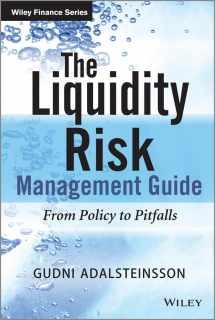
The Liquidity Risk Management Guide: From Policy to Pitfalls (The Wiley Finance Series)
Book details
Summary
Description
Liquidity risk is in the spotlight of both regulators and management teams across the banking industry. The European banking regulator has introduced and implemented a stronger liquidity regulatory framework and local regulators have made liquidity a top priority on their supervisory agenda. Banks have accordingly followed suit. Liquidity risk is now a topic widely discussed in boardrooms as banks strive to set up a strong and efficient liquidity risk management framework which, while maintaining sufficient resources, does not jeopardize the necessary profitability and return targets.
The Liquidity Risk Management Guide: From Policy to Pitfalls is practical guide for banks and risk professionals to proactively manage liquidity risk in a systemic way. The book sets out its own comprehensive framework, which includes all the various and critical components of liquidity risk management. The recommendations are based on experiences from the recent financial crises, best practices and compliance with current and future regulatory requirements, with special emphasis on Basel III.
Using the new 6 Step Framework, the book provides step-by-step guidance for the reader to build their liquidity management framework into a new overarching structure, which brings all the different parts of liquidity risk into one approach. Special attention is given to the challenges that banks currently face when adopting and implementing the Basel III liquidity requirements and guidance is given on how the new metrics can be integrated into the existing framework, providing the most value to the banks instead of being a regulatory reporting matter.


We would LOVE it if you could help us and other readers by reviewing the book
Book review



